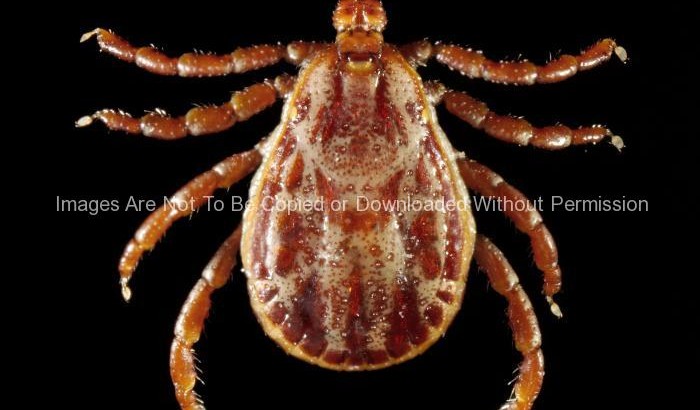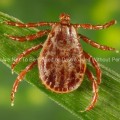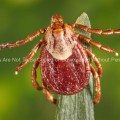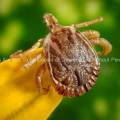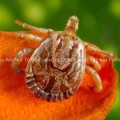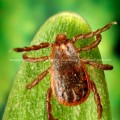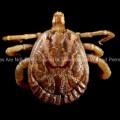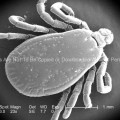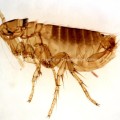This photograph depicts a dorsal view of a male Rocky Mountain wood tick, Dermacentor andersoni. This tick specie is a known North American vector of Rickettsia rickettsii, which is the etiologic agent of Rocky Mountain spotted fever.
Rocky Mountain spotted fever, like all rickettsial infections, is classified as a zoonosis. Zoonoses are diseases of animals that can be transmitted to humans. Many zoonotic diseases require a biological vector (e.g., a mosquito, tick, flea, or mite) in order to be transmitted from the animal host to the human host. In the case of Rocky Mountain spotted fever, ticks are the natural hosts, serving as both reservoirs and vectors of R. rickettsii. Ticks transmit the organism to vertebrates primarily by their bite. Less commonly, infections may occur following exposure to crushed tick tissues, fluids, or tick feces.
Rickettsia rickettsii usually infects members of the tick family Ixodidae (hard ticks), although a closely related rickettsia has been found in the soft bat tick, Carios kelleyi. These ticks have four stages in their life cycle: egg, larva, nymph, and adult. After the eggs hatch, each stage must feed once to develop into the next stage. Both male and female ticks will bite.
Rickettsiae are transmitted to a vertebrate host through saliva while a tick is feeding. It usually takes several hours of attachment and feeding, before the rickettsiae are transmitted to the host. The risk of exposure to a tick carrying R. rickettsii is low. In general, about 1%-3% of the tick population carries R. rickettsii, even in areas where the majority of human cases are reported.
